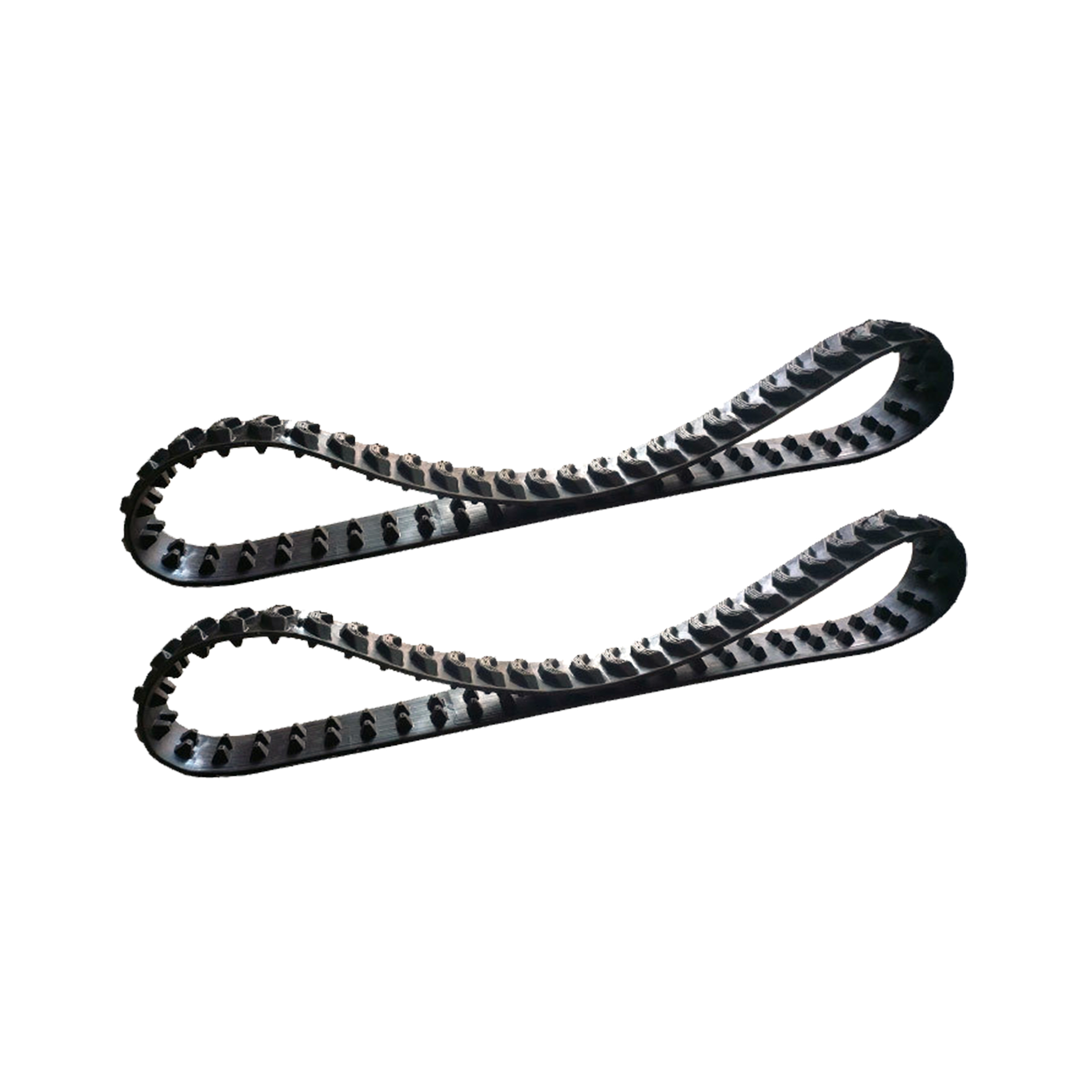Crawler rubber tracks are a fundamental component used in various construction, agricultural, and industrial machines. They serve as a flexible and durable alternative to steel tracks, offering better ride comfort, reduced noise, and minimized surface damage on roads and landscapes. To achieve these benefits, manufacturers use a carefully selected combination of raw materials. Each material is chosen based on specific performance requirements such as durability, traction, and resistance to wear, tear, and environmental factors.

The main body of the rubber track is composed of a blend of natural rubber (NR) and synthetic rubber, commonly styrene-butadiene rubber (SBR) and butadiene rubber (BR). Natural rubber offers good elasticity, flexibility, and abrasion resistance, which are crucial for maintaining grip and reducing wear. However, since natural rubber has limitations in oil and weather resistance, it is often mixed with synthetic rubbers to improve performance.
SBR adds durability and heat resistance, while BR provides resilience and flexibility under repeated movement. The exact proportions of each type of rubber depend on the intended usage of the track—for example, high-speed versus off-road applications.
High-tensile steel cords are embedded within the rubber to provide reinforcement and maintain the structural integrity of the track under load. These cords are usually arranged in a spiral or continuous loop pattern to prevent snapping and to distribute tension evenly. In larger crawler tracks, an iron core or steel bar may also be embedded along the inner circumference to provide additional support and guide stability.
In some designs, nylon or polyester fiber layers are added between the rubber layers to enhance puncture resistance and dimensional stability. These fabrics also help control the expansion and contraction of the rubber when exposed to different temperatures.
Additional materials such as carbon black (for UV and wear resistance), anti-aging agents, and plasticizers are blended into the rubber compound to enhance its mechanical and environmental performance. These additives play an important role in prolonging the track's service life.
Rubber tracks for mini diggers—also known as compact excavators—are specifically designed to meet the operational demands of small construction machines. These tracks provide essential mobility and surface protection while ensuring that the machine remains stable and effective across a range of terrains. They differ from larger crawler tracks not only in size but also in design features and functional expectations.
1. Size and Compatibility
Rubber tracks for mini diggers are manufactured to fit machines typically ranging from 0.8 to 8 tons in operating weight. These tracks come in various widths (usually between 180mm and 450mm) and pitch lengths to suit different models. Compatibility with the machine's undercarriage system is a critical consideration, as improper fitment can premature wear or derailment.
2. Structure and Construction
Mini digger rubber tracks are generally composed of a multi-layer structure:
Outer rubber layer: Designed for traction and abrasion resistance, featuring tread patterns optimized for grip and minimal soil disturbance.
Inner rubber layer: Protects the embedded steel cords and helps absorb vibrations.
Steel reinforcement cords: Provide strength and resist elongation, especially under high loads.
Inner guide lugs: Ensure smooth travel over the sprockets and rollers, reducing slippage.
This construction allows for flexibility, yet maintains enough rigidity to support the machine's weight during digging and lifting operations.
3. Application Benefits
Rubber tracks are particularly suitable for mini diggers used in urban or residential areas. Compared to steel tracks, rubber variants offer:
Reduced surface damage to pavement, lawns, and driveways.
Lower noise levels, which is important for work in noise-sensitive environments.
Lighter overall weight, contributing to better fuel efficiency and easier transportation.